Speaker
Description
Precise measurements of absolute nuclear charge radii are crucial ingredients for QED tests and are valuable benchmarks for modern nuclear structure theory [1]. Muonic atom spectroscopy is well known as an ideal method to accurately determine the root-mean-square (RMS) radii of the nuclear charge density distribution. By measurements of the 2p-1s and 2s-2p transitions of muonic atoms, this technique has already provided precise measurements for the very light (Z<3) as well as heavier nuclei (Z>10) [2,3,4]. However, a gap for muonic atoms from lithium to neon remains due to those cases' technologically challenging energy range of their transitions (~20-200 keV). To address this gap, the QUARTET collaboration employs cryogenic metallic magnetic calorimeters (MMCs), which combine broad-band spectroscopy with record-resolving power to perform spectroscopy of light muonic atoms and to refine the nuclear charge radii of light nuclei from lithium to neon [5]. This talk presents the status of the experiment and the first high-resolution spectra of muonic lithium obtained with an MMC. References: [1] Karshenboim, S. G. (2005). Precision physics of simple atoms: QED tests, nuclear structure and fundamental constants. Physics reports, 422(1-2), 1-63. [2] Fricke, G., Heilig, K., & Schopper, H. F. (2004). Nuclear charge radii (Vol. 454). Berlin: Springer. [3] Pohl, R., Antognini, A., Nez, F. et al. (2010). The size of the proton. Nature 466, 213–216. [4] Krauth, J.J., Schuhmann, K., Ahmed, M.A. et al. (2021). Measuring the α-particle charge radius with muonic helium-4 ions. Nature 589, 527–531. [5] Ohayon, B.; Abeln, A.; Bara, S.; Cocolios, T.; Eizenberg, O.; Fleischmann, A.; Gastaldo, L.; Godinho, C.; Heines, M.; Hengstler, D.; Hupin, G.; Indelicato, P.; Kirch, K.; Knecht, A.; Kreuzberger, D.; Machado, J.; Navratil, P.; Paul, N.; Pohl, R.; Unger, D.; Vogiatzi, S.; Schoeler, K.; Wauters, F. Towards Precision Muonic X-ray Measurements of Charge Radii of Light Nuclei. Physics 2024, 6(1), 206-215

